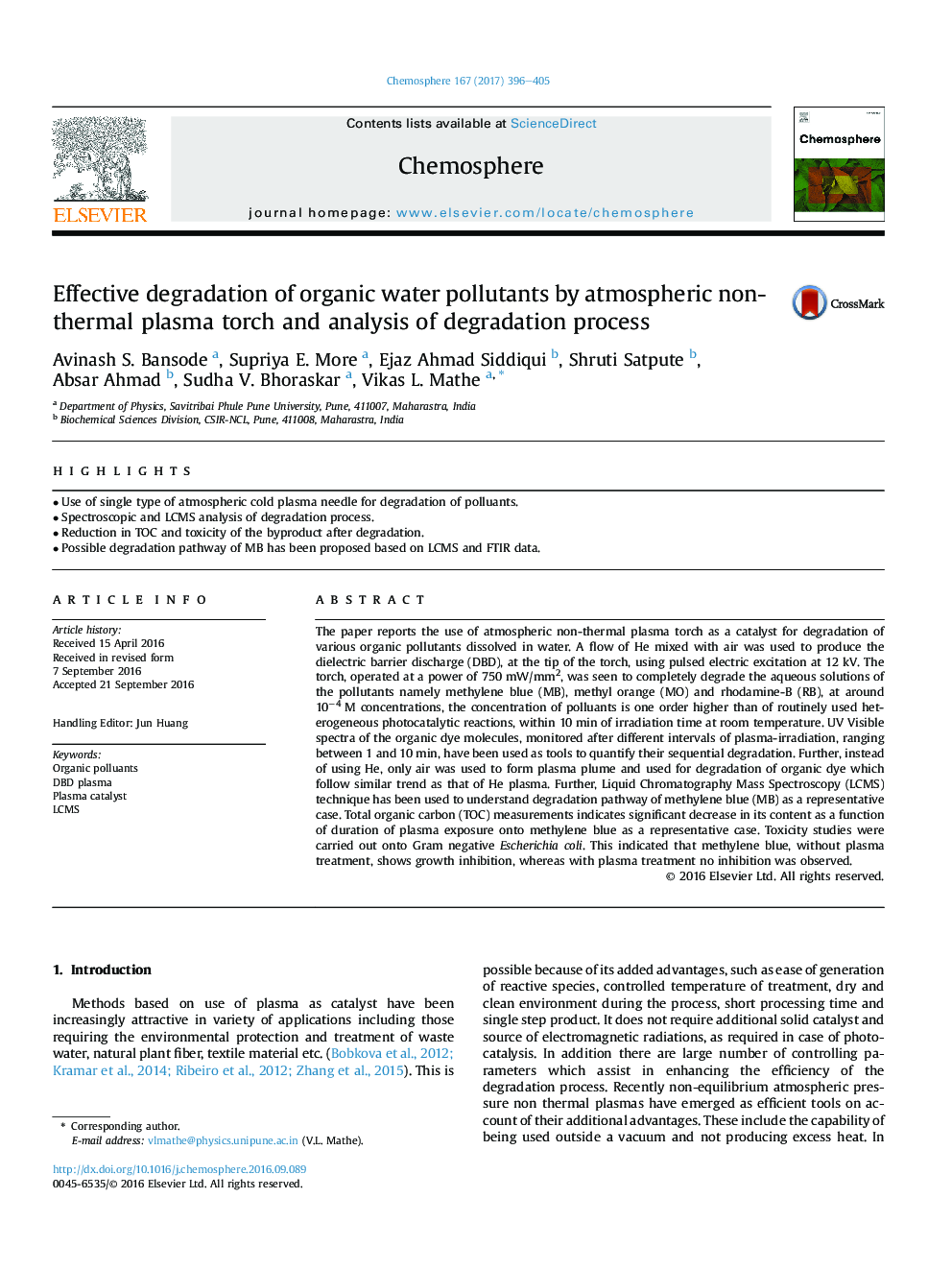| Article ID | Journal | Published Year | Pages | File Type |
|---|---|---|---|---|
| 6305987 | Chemosphere | 2017 | 10 Pages |
Abstract
The paper reports the use of atmospheric non-thermal plasma torch as a catalyst for degradation of various organic pollutants dissolved in water. A flow of He mixed with air was used to produce the dielectric barrier discharge (DBD), at the tip of the torch, using pulsed electric excitation at 12Â kV. The torch, operated at a power of 750Â mW/mm2, was seen to completely degrade the aqueous solutions of the pollutants namely methylene blue (MB), methyl orange (MO) and rhodamine-B (RB), at around 10â4Â M concentrations, the concentration of polluants is one order higher than of routinely used heterogeneous photocatalytic reactions, within 10Â min of irradiation time at room temperature. UV Visible spectra of the organic dye molecules, monitored after different intervals of plasma-irradiation, ranging between 1 and 10Â min, have been used as tools to quantify their sequential degradation. Further, instead of using He, only air was used to form plasma plume and used for degradation of organic dye which follow similar trend as that of He plasma. Further, Liquid Chromatography Mass Spectroscopy (LCMS) technique has been used to understand degradation pathway of methylene blue (MB) as a representative case. Total organic carbon (TOC) measurements indicates significant decrease in its content as a function of duration of plasma exposure onto methylene blue as a representative case. Toxicity studies were carried out onto Gram negative Escherichia coli. This indicated that methylene blue, without plasma treatment, shows growth inhibition, whereas with plasma treatment no inhibition was observed.
Keywords
Related Topics
Life Sciences
Environmental Science
Environmental Chemistry
Authors
Avinash S. Bansode, Supriya E. More, Ejaz Ahmad Siddiqui, Shruti Satpute, Absar Ahmad, Sudha V. Bhoraskar, Vikas L. Mathe,
